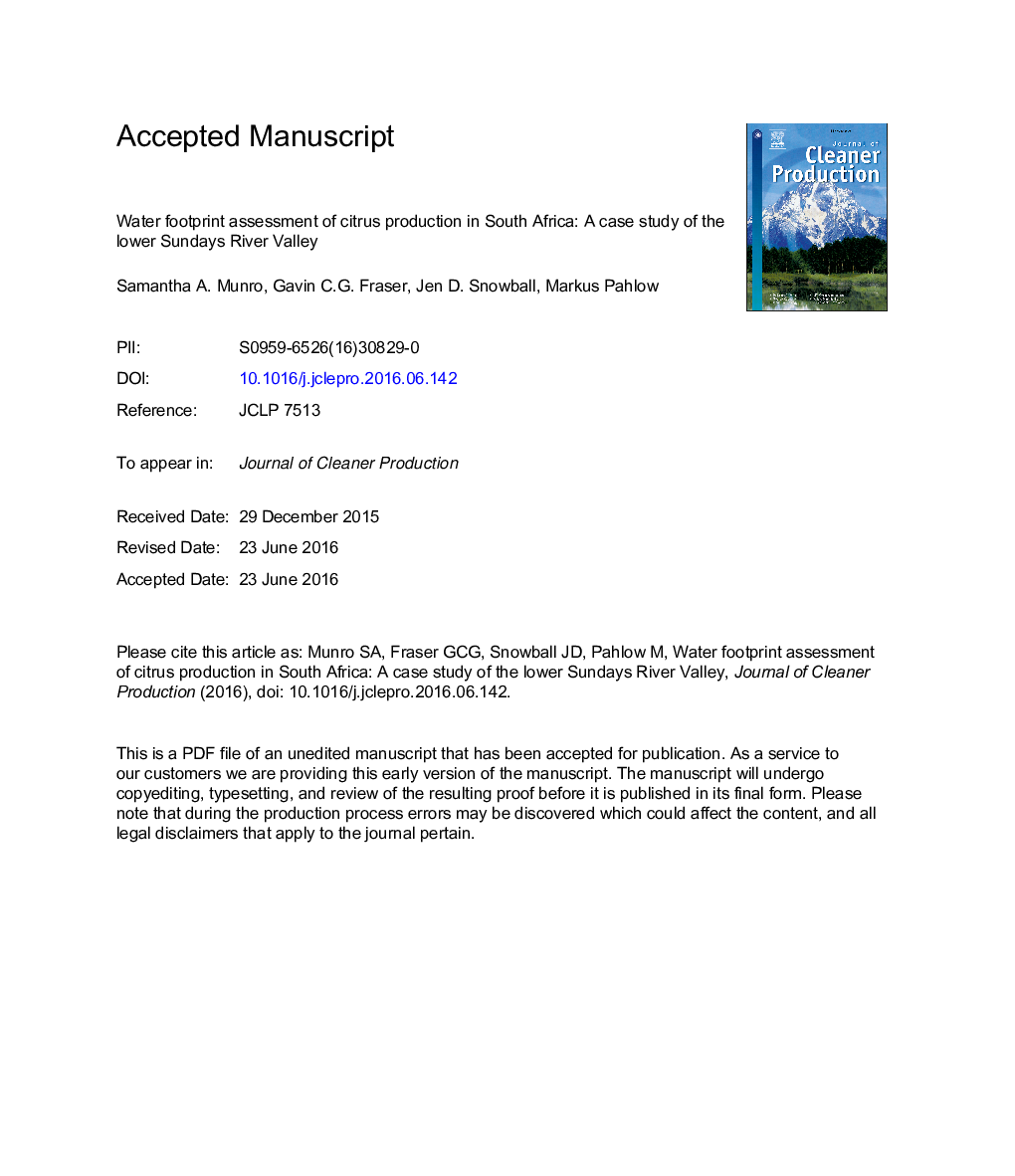| کد مقاله | کد نشریه | سال انتشار | مقاله انگلیسی | نسخه تمام متن |
|---|---|---|---|---|
| 8101245 | 1522115 | 2016 | 40 صفحه PDF | دانلود رایگان |
عنوان انگلیسی مقاله ISI
Water footprint assessment of citrus production in South Africa: A case study of the Lower Sundays River Valley
ترجمه فارسی عنوان
ارزیابی اثرات آب تولید مرکبات در آفریقای جنوبی: مطالعه موردی در دره رودخانه روزهای یکشنبه
دانلود مقاله + سفارش ترجمه
دانلود مقاله ISI انگلیسی
رایگان برای ایرانیان
کلمات کلیدی
ارزیابی ردیابی آب مرکبات، پایداری، بهره وری، مدیریت آب، معیارها،
موضوعات مرتبط
مهندسی و علوم پایه
مهندسی انرژی
انرژی های تجدید پذیر، توسعه پایدار و محیط زیست
چکیده انگلیسی
Water footprint assessment is a developing method that is being increasingly applied to quantify water use, prioritise reductions, assess sustainability and provide information to achieve sustainable, efficient, and equitable water use. The objectives of this paper were to conduct a water footprint assessment of primary citrus production within the Lower Sundays River Valley in South Africa using local, high-resolution data and to examine indicators (water scarcity, pollution, efficiency, productivity and access) to determine the sustainability of blue, green and grey water footprints of a wet, dry and average year. Lemons were found to have the lowest blue and combined green-blue water footprint per ton of production across all climatic years, followed by soft citrus, valencias and navels. Valencias had the lowest, and navels the highest grey WF (relating to inorganic nitrogen). Lemons, despite their high crop water and fertiliser requirements, were regarded more economically efficient in comparison to valencias, soft citrus and navels, in that they provided higher net income and more employment hours per m3 of water in comparison to other citrus crops. In an average season, lemons generated approximately 39% more income per m3 of water than navels, despite navels being the dominant cultivar. Blue water consumption for citrus in the catchment was calculated to be 58.7Â Mm3 for an average season and 89.2Â Mm3 for a dry season. Due to an inter-basin transfer scheme, no physical water scarcity occurred, and both environmental and basic human needs are met. Water pollution levels related to nitrogen however, exceeded the assimilative capacity of the run-off in dry years. The area also experiences institutional and infrastructural scarcity and 14% of the population do not have access to piped water. Stakeholders and governments may use the results of water footprint assessments to determine the status of river basins, make evaluations for future water usage and the potential impacts of expanding agriculture and different management strategies. Including environmental and socio-economic indicators will also improve the integrity of water footprint assessments.
ناشر
Database: Elsevier - ScienceDirect (ساینس دایرکت)
Journal: Journal of Cleaner Production - Volume 135, 1 November 2016, Pages 668-678
Journal: Journal of Cleaner Production - Volume 135, 1 November 2016, Pages 668-678
نویسندگان
Samantha A. Munro, Gavin C.G. Fraser, Jen D. Snowball, Markus Pahlow,
